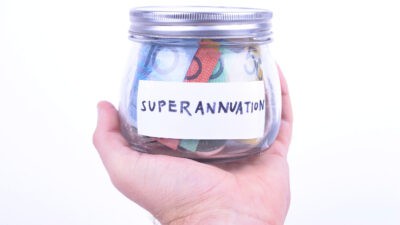At the core of every Aussie's retirement goal lingers one overlord — superannuation. All of us want a comfy retirement. And super, like or not, plays a central role in achieving this.
But the world is changing. Interest rates. House prices. Wars. All potential negatives that have some US equity strategists projecting 3% annualised returns for the next decade in US markets. Not to be pessimistic.
And we can't overlook a basic economic fact: Inflation. The TV set that cost $500 10 years ago — and you paid $100 extra for the 'deluxe model' — doesn't cost $500 in today's dollars.
Inflation erodes purchasing power, in turn increasing the general cost of living over time.
So, how long will $700,000 in superannuation last? The answer depends on factors such as your lifestyle, investment returns, and eligibility for additional income. Let's take a closer look.
Super-duper statistics
The Association of Superannuation Funds of Australia (ASFA) suggests that $690,000 is enough for a couple to enjoy a comfortable retirement, while singles should aim for $595,000 in superannuation.
A comfortable lifestyle includes essentials like groceries, health insurance, and home repairs. But it also includes time for fun, hobbies/interests and the occasional travel.
According to ASFA, this equates to an annual spend of $73,337 for couples and $52,085 for singles. On a side note, it seems having a life partner costs an additional $21,000 in annual operating expenditures to live a comfy retirement. Something to keep in mind?
If we assume the 15-year average balanced fund return of 6-7% for superannuation in Australia and a 2.75% inflation rate, the numbers are satisfactory.
It does depend on when you plan to retire, but assuming you hang up the boots at 60, and earn 6-7%, and inflation runs at 2-3%, running the maths gives us the following outcomes for couples:
| Assumes retirement at 60 | Required balance | Required balance |
| Retirement expense | To last 10 years | To last 30 years |
| $40,000 | $255,000 | $290,000 |
| $50,000 | $340,000 | $485,000 |
| $60,000 | $425,000 | $675,000 |
| $70,000 | $510,000 | $930,000 |
So, if you have $700,000 invested in retirement and are earning this rate of return, this could last almost 30 years for a couple spending $60,000 annually. Give or take for higher annual spending, respectively.
Superannuation longevity
The longevity of your superannuation depends on a few key variables. Your planned annual expenses are the most significant factor.
Whether you aim for a lifestyle that costs $40,000 or $70,000 annually to maintain will drastically change how long your balance lasts. Simple math.
Investment returns also play a crucial role. Balanced funds, which allocate up to 60% to growth assets like shares in the S&P/ASX 200 index (ASX: XJO), have delivered average annualised returns of 5.8% over the past decade.
Superannuation funds biased to growth, where up to 80% of funds are invested in the stock market, have delivered returns of 7.2% per year, a 120 basis point advantage.
But when spread out on the table, it comes down to the combination of annual expenditures, long-term inflation and investment returns. You want the least of the first two and the highest of the third.
Is $700,000 enough?
Indeed, $700,000 is a solid benchmark for retirement savings. But far more importantly, your actual needs depend on your lifestyle and financial goals.
For those aiming for a modest retirement — defined by ASFA as requiring $47,731 annually for couples — $700,000 is likely to last well over 30 years, even without the aged pension.
However, if your retirement dreams include international travel or financial support for family members, you'll probably need more.
That's not meant to be daunting. Rather, it's meant to be informative so that you can apply it as best as possible.
The key takeaway is to plan early, monitor your superannuation balance regularly, and adjust your retirement strategy as needed. Working longer, reducing expenses, or optimising your investments can all help ensure your super lasts throughout retirement.






